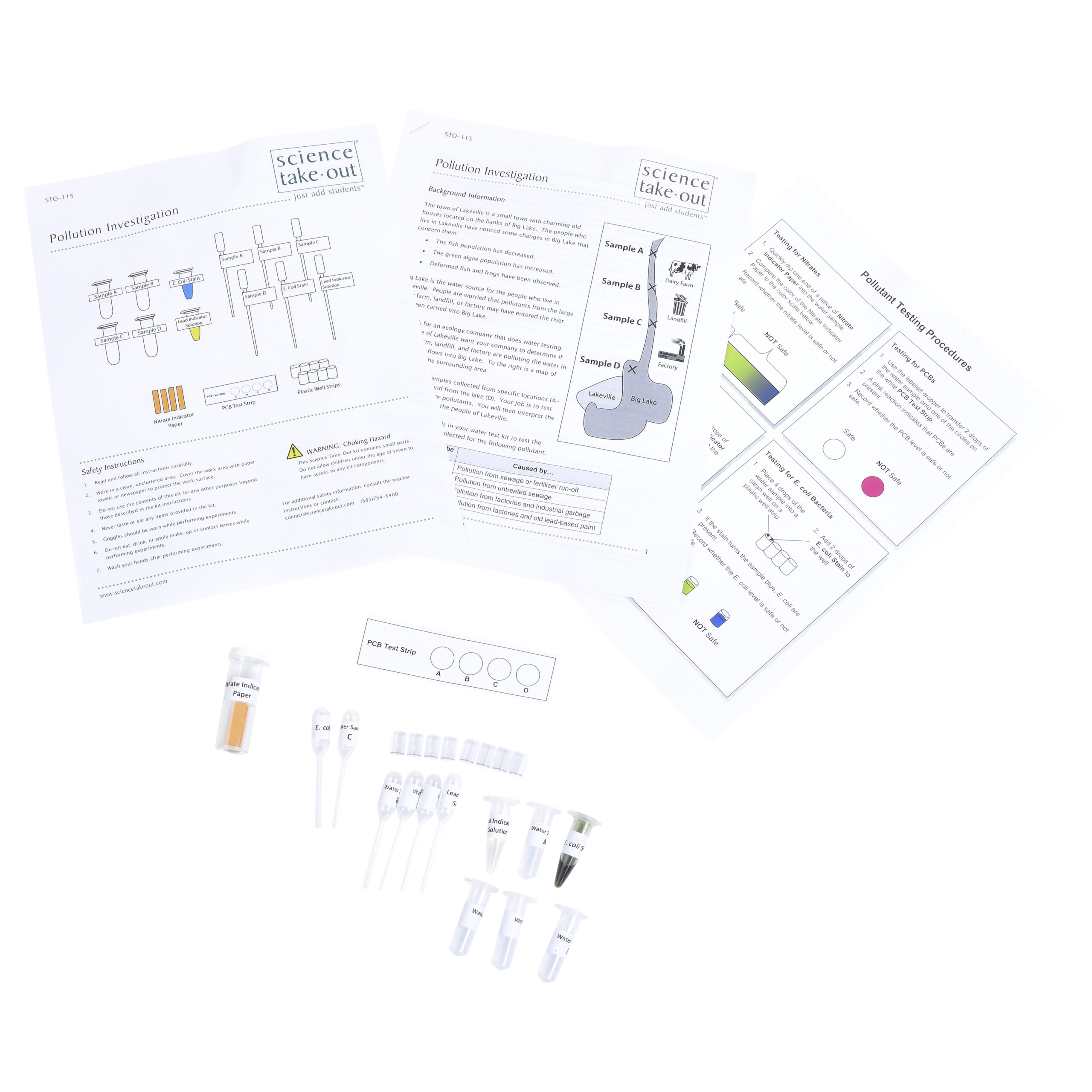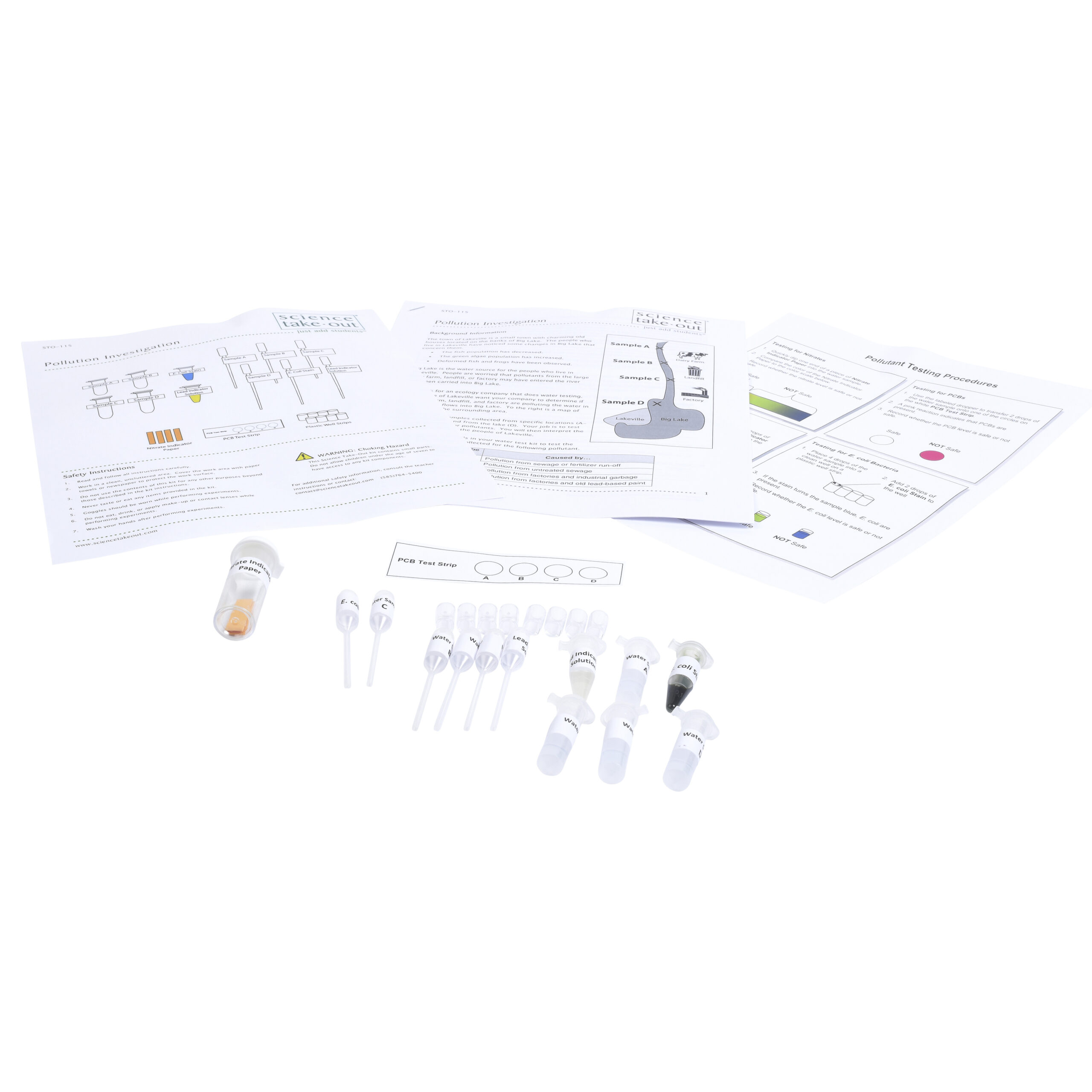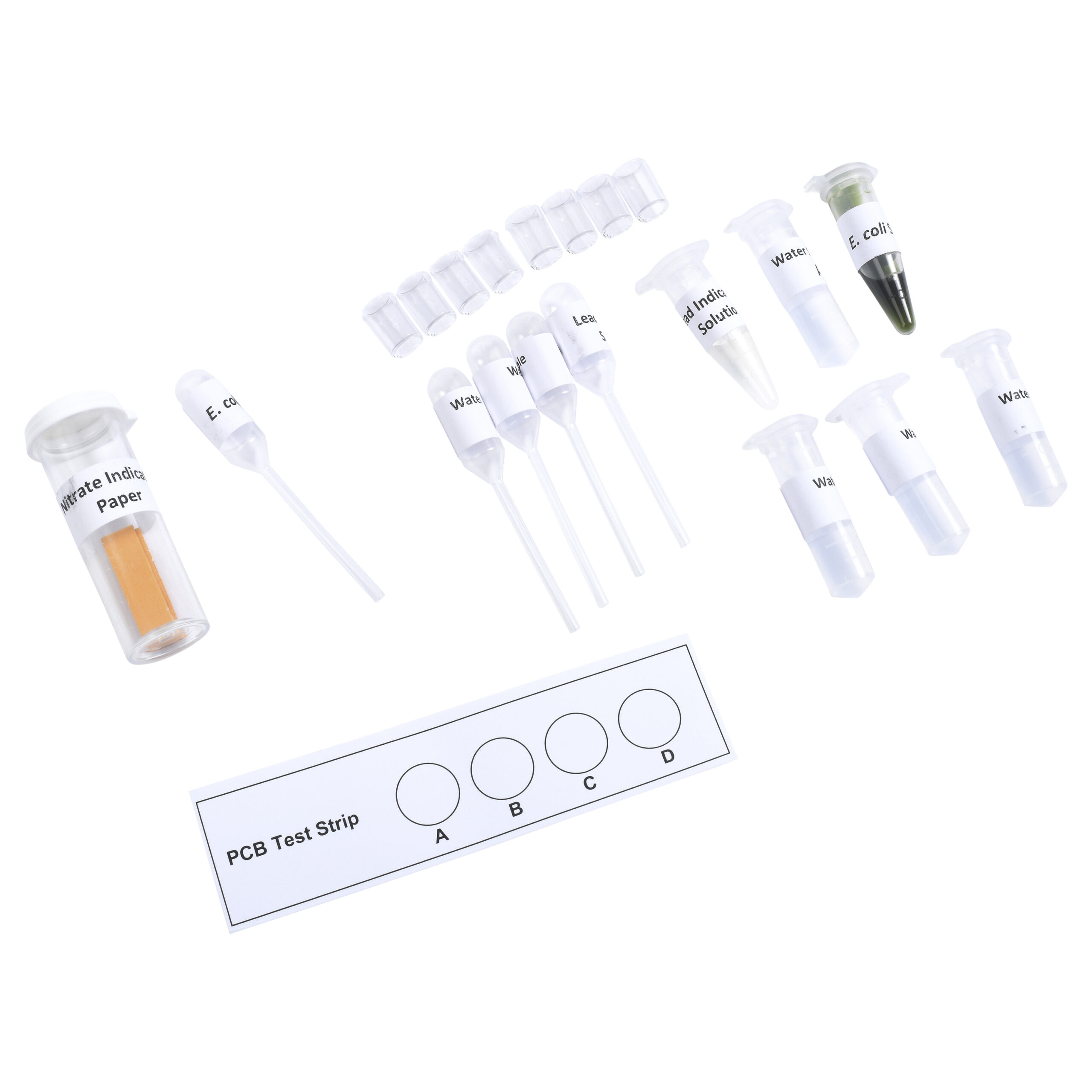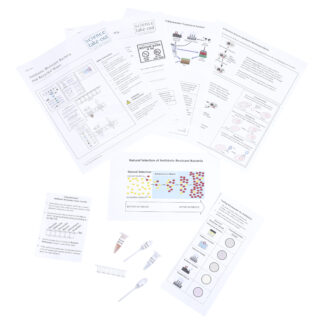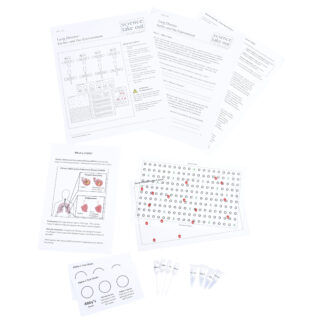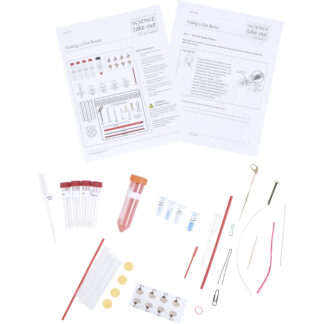Pollution Investigation
$15.95 – $106.95
Investigate the cause of water pollution in Big Lake.
What is causing the water pollution in Big Lake? Is it the dairy farm, the landfill or the factory?
Kit Includes
- Student instructions
- 4 tubes of simulated “Water” samples
- 4 strips of simulated “Nitrate Indicator Paper”
- 1 simulated “PCB Test Strip”
- 2 plastic well strips
- 1 tube of simulated “E. coli Stain”
- 1 tube of simulated “Lead Indicator Solution”
- 6 labeled droppers
- Pollutant Testing Procedures sheet
Quantity Discounts
Kits:
- 1 – 9 kits: $15.95 each
- 10 – 24 kits: $15.15 each
- 25+ kits: $14.36 each
Unassembled:
- 1 – 9 packs: $106.95 each
- 10+ packs: $101.60 each
Refills:
- 1 – 9 packs: $56.95 each
- 10+ packs: $54.10 each
Correlation to Next Generation Science Standards (NGSS) Shop by NGSS »
Performance Expectations:
MS-ESS3-3. Apply scientific principles to design a method for monitoring and minimizing a human impact on the environment.
Science & Engineering Practices
Analyzing and Interpreting Data - Analyze and interpret data to provide evidence for phenomena
Disciplinary Core Ideas
ESS3.C: Human Impacts on Earth Systems - Human activities have significantly altered the biosphere, sometimes damaging or destroying natural habitats and causing the extinction of other species. But changes to Earth’s environments can have different impacts (negative and positive) for different living things.
Crosscutting Concepts
Cause and Effect - Cause and effect relationships can explain and predict behaviors in complex natural and designed systems.
